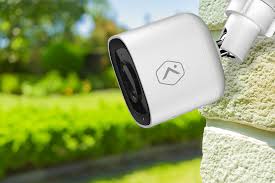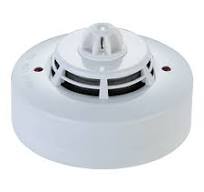In today’s fast-paced and digital world, businesses are constantly seeking innovative solutions to streamline their operations and enhance efficiency. One such technological advancement that has revolutionized the way organizations manage their workforce is the cloud-based attendance system.
A cloud-based attendance system offers a convenient and secure way for companies to track employee attendance, monitor work hours, and generate accurate payroll reports. By leveraging the power of cloud computing, this system eliminates the need for traditional manual methods of attendance tracking, such as paper timesheets or punch cards.
One of the key benefits of a cloud-based attendance system is its accessibility. Employees can easily clock in and out using various devices, such as smartphones, tablets, or computers, from anywhere with an internet connection. This flexibility is especially beneficial for companies with remote or field employees who may not have access to a physical time clock.
Moreover, the real-time data capture feature of cloud-based attendance systems ensures that managers have instant access to up-to-date information on employee attendance patterns and work hours. This enables them to make informed decisions quickly and efficiently, leading to improved workforce management and productivity.
Another advantage of cloud-based attendance systems is their scalability. Whether a company has ten employees or hundreds, these systems can easily accommodate varying workforce sizes without requiring significant infrastructure investments or upgrades. This scalability makes them an ideal solution for growing businesses looking to streamline their HR processes.
Furthermore, the automated reporting capabilities of cloud-based attendance systems help reduce errors and save time on payroll processing. By integrating with existing HR software or payroll systems, these systems can generate accurate reports on employee work hours, overtime, and leave balances with just a few clicks.
In conclusion, the adoption of a cloud-based attendance system offers numerous benefits for modern businesses looking to optimize their workforce management processes. From improved accuracy and efficiency to enhanced accessibility and scalability, this technology is proving to be a valuable asset for companies striving to stay ahead in today’s competitive market.
9 Essential Tips for Choosing a Cloud-Based Attendance System
- Ensure the system integrates with existing HR software for seamless data management.
- Choose a platform with mobile app access for remote and flexible attendance tracking.
- Opt for a system that supports biometric authentication to enhance security.
- Look for real-time reporting features to monitor attendance patterns effectively.
- Verify the system’s scalability to accommodate future growth in employee numbers.
- Prioritize solutions offering robust data encryption to protect sensitive information.
- Select a provider with reliable customer support for quick issue resolution.
- Consider systems with geo-fencing capabilities for location-based attendance logging.
- Evaluate user reviews and case studies to gauge the system’s reliability and performance.
Ensure the system integrates with existing HR software for seamless data management.
When implementing a cloud-based attendance system, it is crucial to ensure that the system integrates seamlessly with existing HR software for efficient data management. By enabling integration between the attendance system and HR software, companies can streamline their processes and avoid duplicate data entry. This integration allows for the automatic transfer of attendance data into the HR system, ensuring accuracy and consistency in employee records. Additionally, it facilitates easier access to comprehensive reports and analytics, providing valuable insights for better decision-making and workforce management.
Choose a platform with mobile app access for remote and flexible attendance tracking.
When selecting a cloud-based attendance system, it is advisable to opt for a platform that provides mobile app access for convenient and flexible attendance tracking, especially for remote employees. By choosing a system with a mobile app, employees can easily clock in and out using their smartphones or tablets, regardless of their location. This feature not only enhances accessibility but also ensures real-time data capture, enabling managers to monitor attendance effectively and make informed decisions promptly. Ultimately, incorporating mobile app access into the attendance system promotes seamless workforce management and empowers organizations to adapt to the evolving needs of a modern workplace.
Opt for a system that supports biometric authentication to enhance security.
When selecting a cloud-based attendance system, it is advisable to choose a solution that supports biometric authentication to bolster security measures. By incorporating biometric features such as fingerprint or facial recognition technology, organizations can significantly enhance the accuracy and reliability of employee attendance tracking. Biometric authentication not only helps prevent buddy punching and time theft but also ensures that only authorized personnel can access the system, thereby safeguarding sensitive attendance data from unauthorized access or tampering. Investing in a system with biometric authentication capabilities is a proactive step towards strengthening security protocols and promoting accountability within the workforce.
Look for real-time reporting features to monitor attendance patterns effectively.
When selecting a cloud-based attendance system, it is crucial to prioritize real-time reporting features to effectively monitor attendance patterns. By having access to instant and up-to-date data on employee attendance, managers can quickly identify trends, address any issues promptly, and make informed decisions to optimize workforce management. Real-time reporting capabilities not only enhance visibility into attendance patterns but also enable proactive measures to be taken in response to any deviations from expected schedules, ultimately leading to improved efficiency and productivity within the organization.
Verify the system’s scalability to accommodate future growth in employee numbers.
When implementing a cloud-based attendance system, it is crucial to verify the system’s scalability to accommodate future growth in employee numbers. Ensuring that the system can easily scale to meet the changing needs of a growing workforce is essential for long-term success. By choosing a scalable solution, businesses can avoid disruptions and costly migrations down the line, allowing them to seamlessly expand their operations without worrying about outgrowing their attendance system.
Prioritize solutions offering robust data encryption to protect sensitive information.
When considering a cloud-based attendance system, it is crucial to prioritize solutions that offer robust data encryption to safeguard sensitive information. Data security is paramount in today’s digital landscape, especially when dealing with employee attendance records and payroll information. By implementing strong encryption protocols, organizations can ensure that all data transmitted and stored within the system remains secure and protected from unauthorized access or cyber threats. Investing in a solution with advanced encryption capabilities not only enhances data privacy but also instills confidence in employees regarding the confidentiality of their personal information.
Select a provider with reliable customer support for quick issue resolution.
Selecting a provider with reliable customer support is crucial when implementing a cloud-based attendance system. Having access to prompt and efficient customer service ensures quick resolution of any issues or technical difficulties that may arise during the setup or usage of the system. A responsive support team can help address concerns, provide guidance on troubleshooting, and offer assistance in maximizing the benefits of the attendance system, ultimately contributing to a smoother implementation process and improved user experience for both employees and management.
Consider systems with geo-fencing capabilities for location-based attendance logging.
When exploring cloud-based attendance systems, it is advisable to consider options that offer geo-fencing capabilities for location-based attendance logging. This feature allows businesses to define virtual boundaries or geographic zones, ensuring that employees can only clock in or out when they are within a specified area. By incorporating geo-fencing technology, companies can enhance the accuracy and reliability of attendance data, prevent time theft, and ensure that employees are physically present at the designated work locations during their scheduled hours.
Evaluate user reviews and case studies to gauge the system’s reliability and performance.
When considering implementing a cloud-based attendance system, it is crucial to evaluate user reviews and case studies to gauge the system’s reliability and performance. User reviews provide valuable insights into the practical experiences of other organizations that have used the system, highlighting its strengths and potential limitations. Additionally, case studies offer real-world examples of how the system has been successfully implemented and its impact on workforce management. By thoroughly analyzing user feedback and case studies, businesses can make informed decisions about selecting a cloud-based attendance system that meets their specific needs and ensures optimal reliability and performance.



